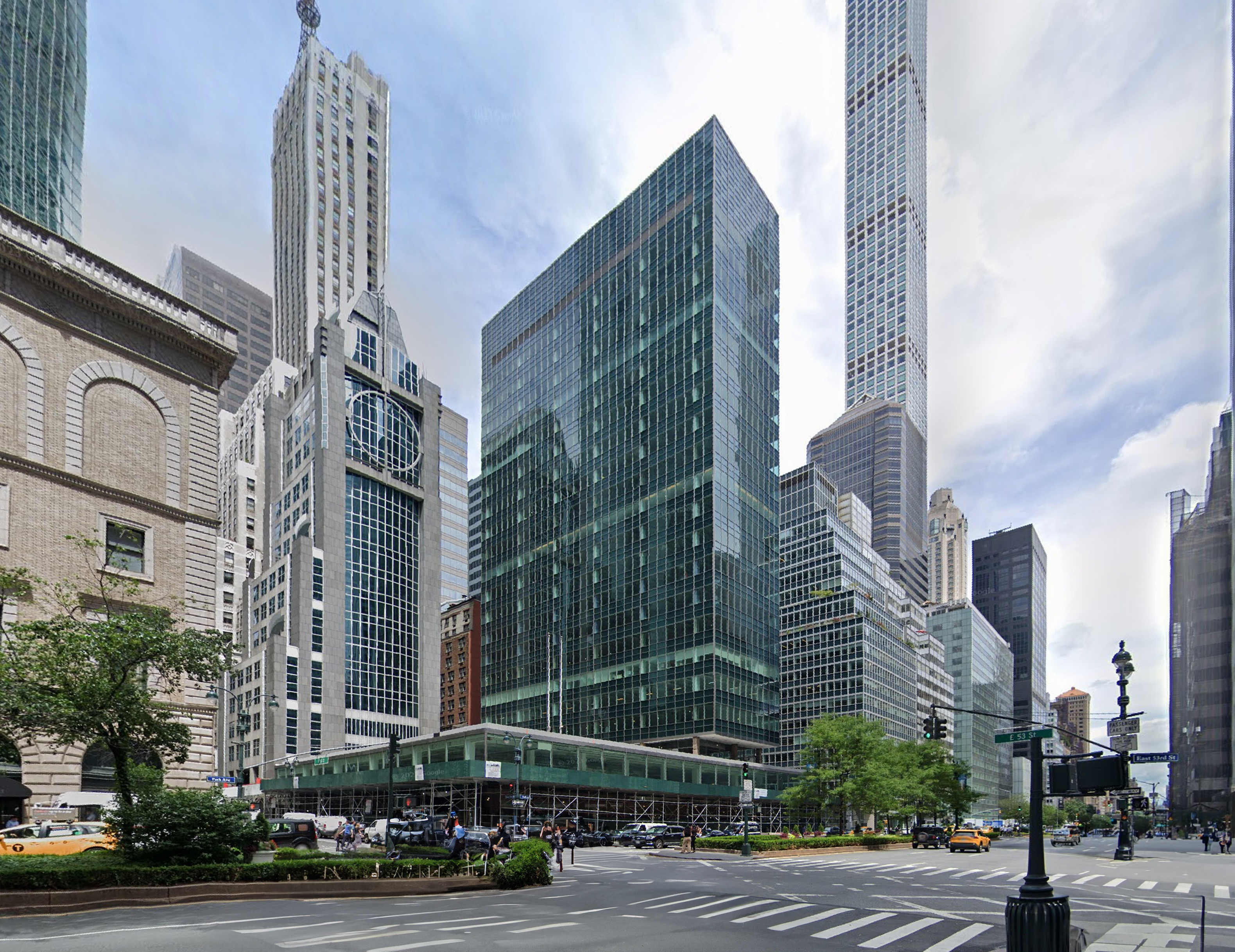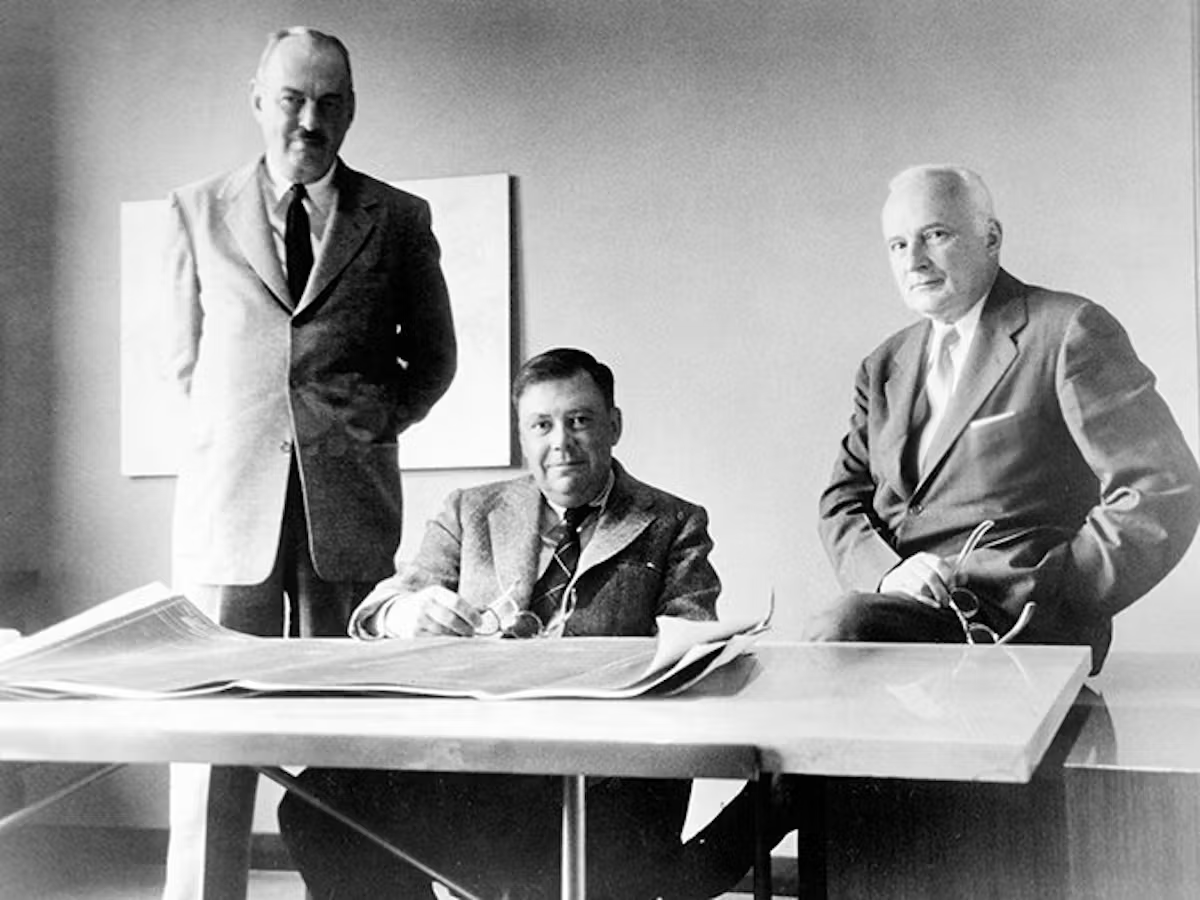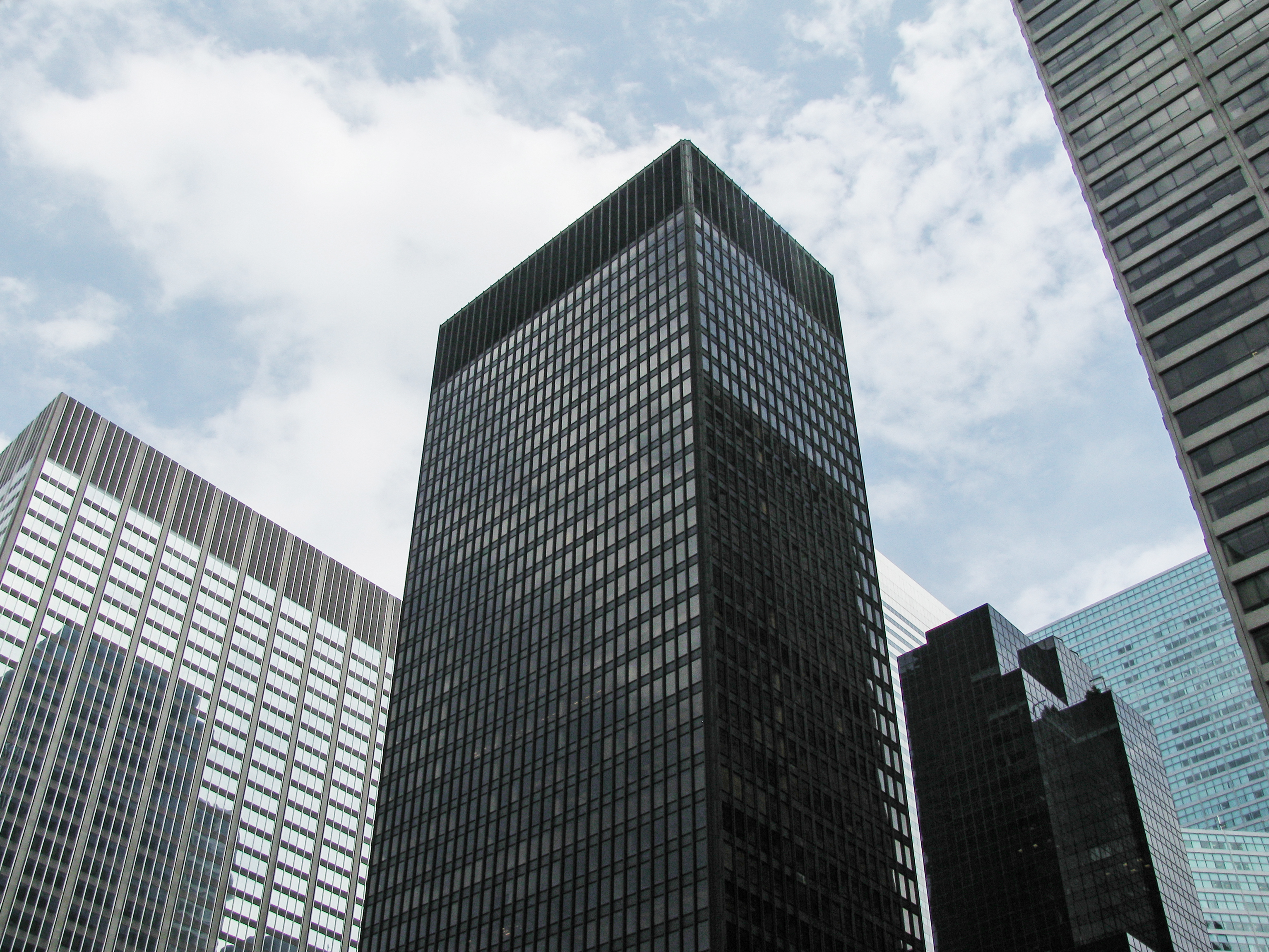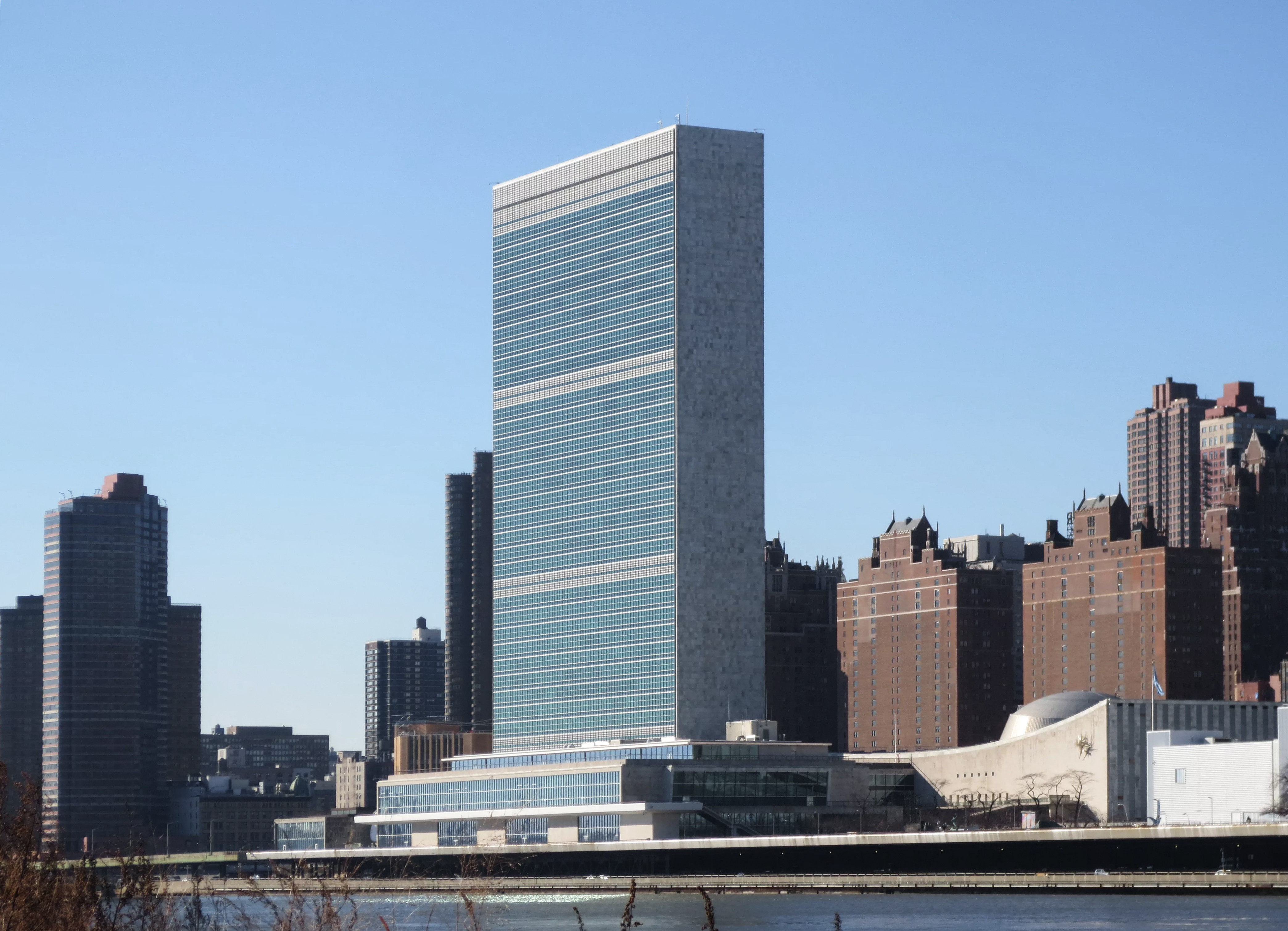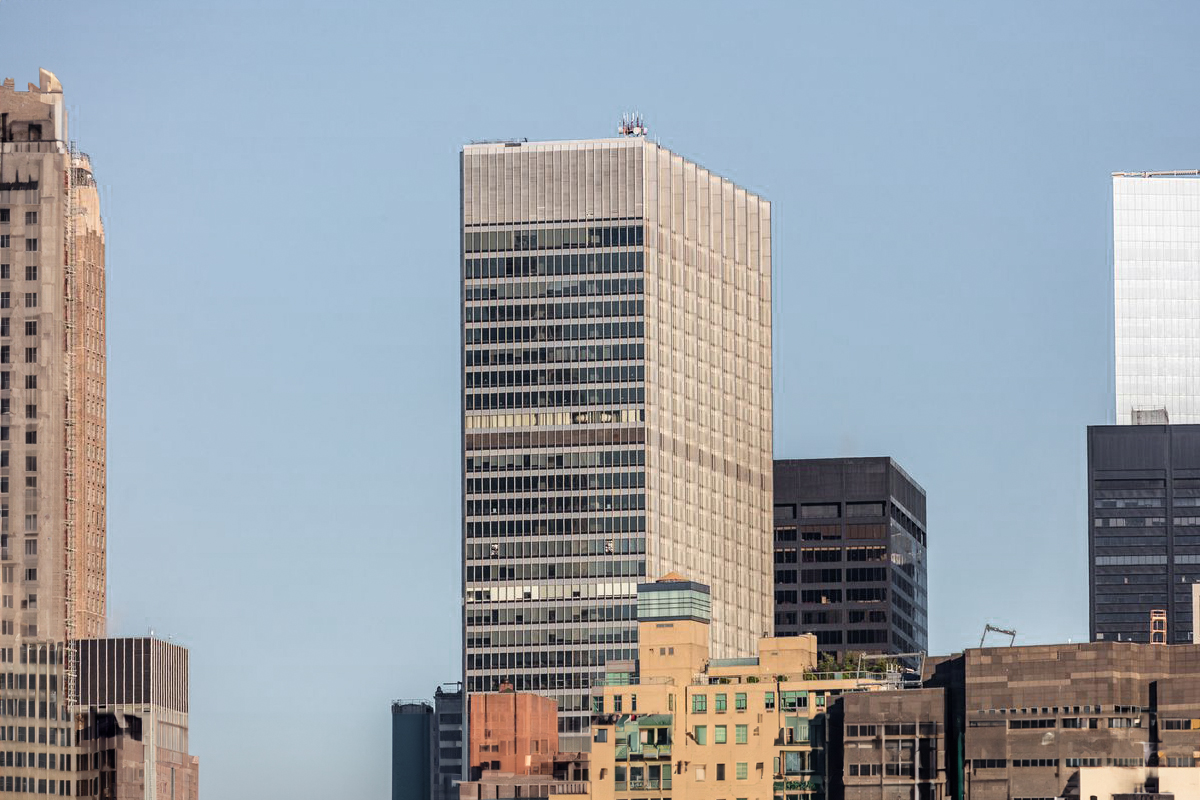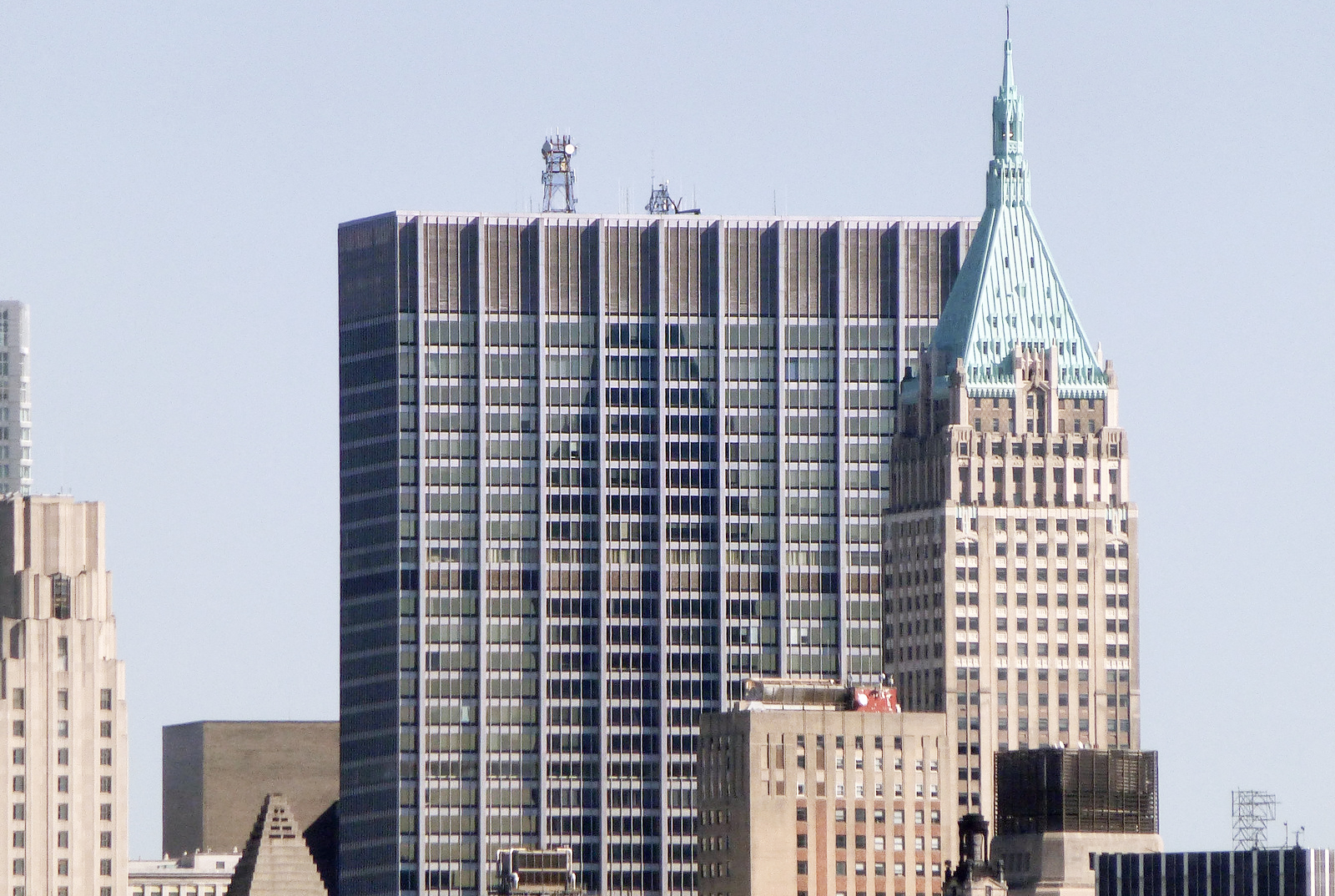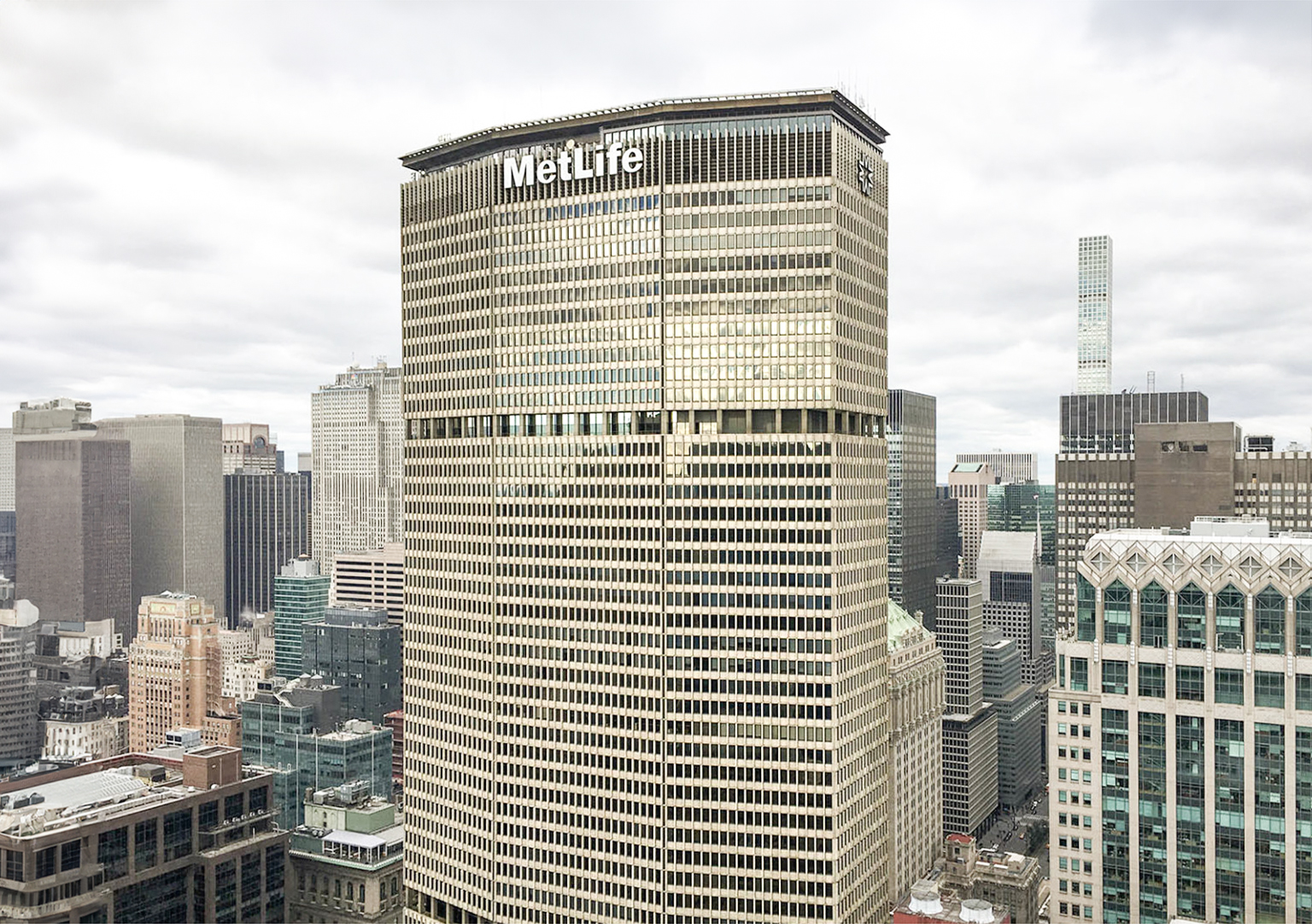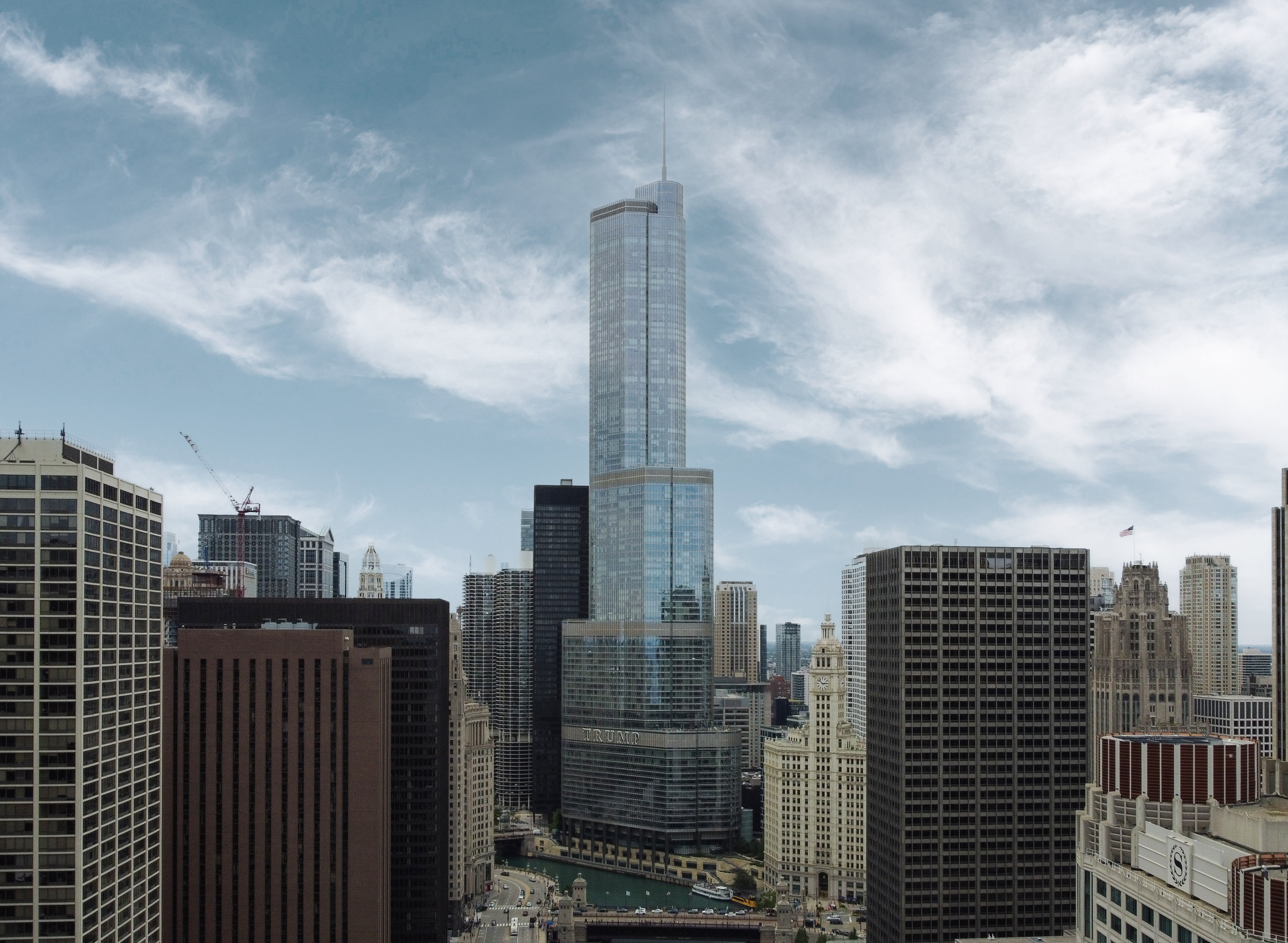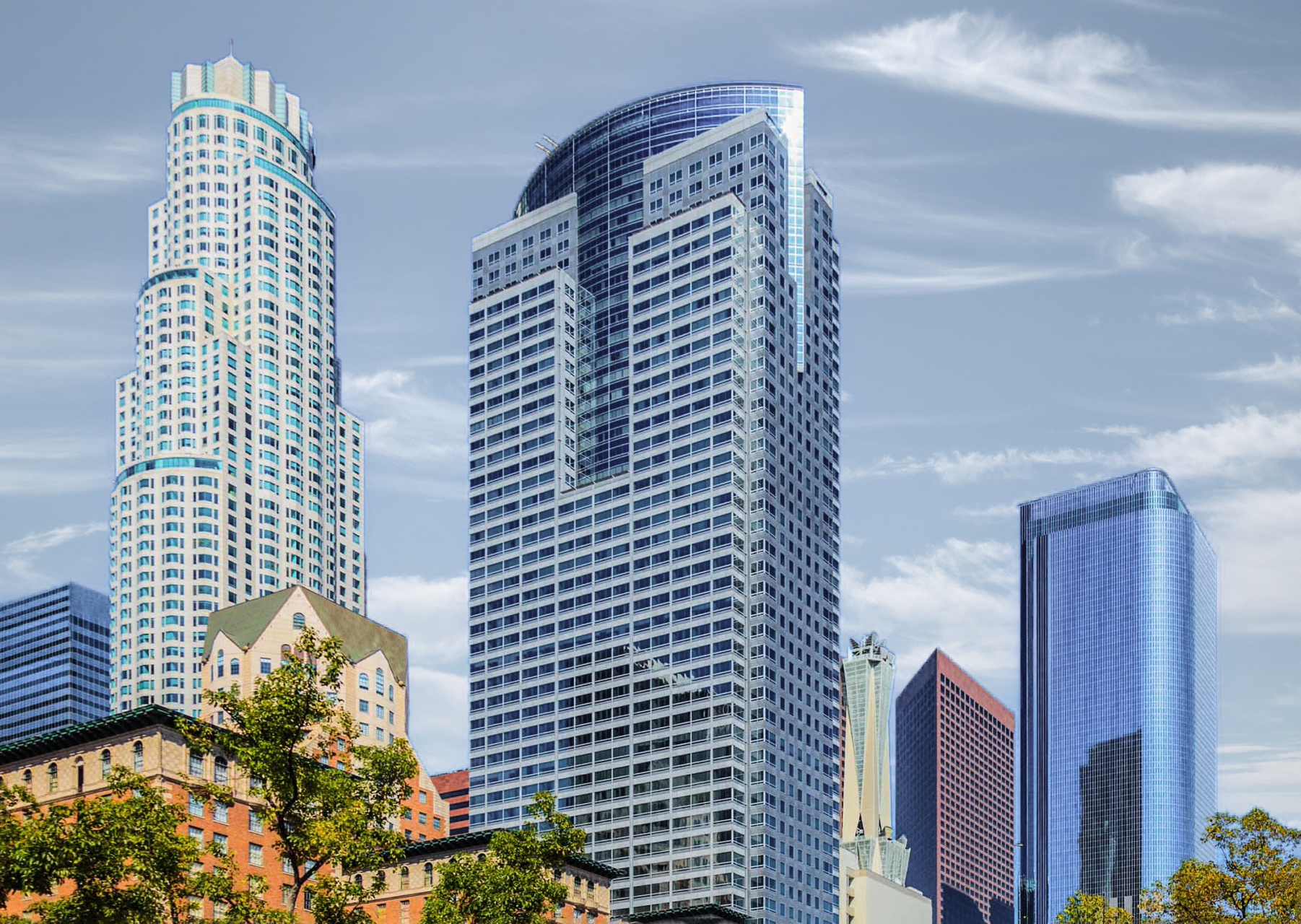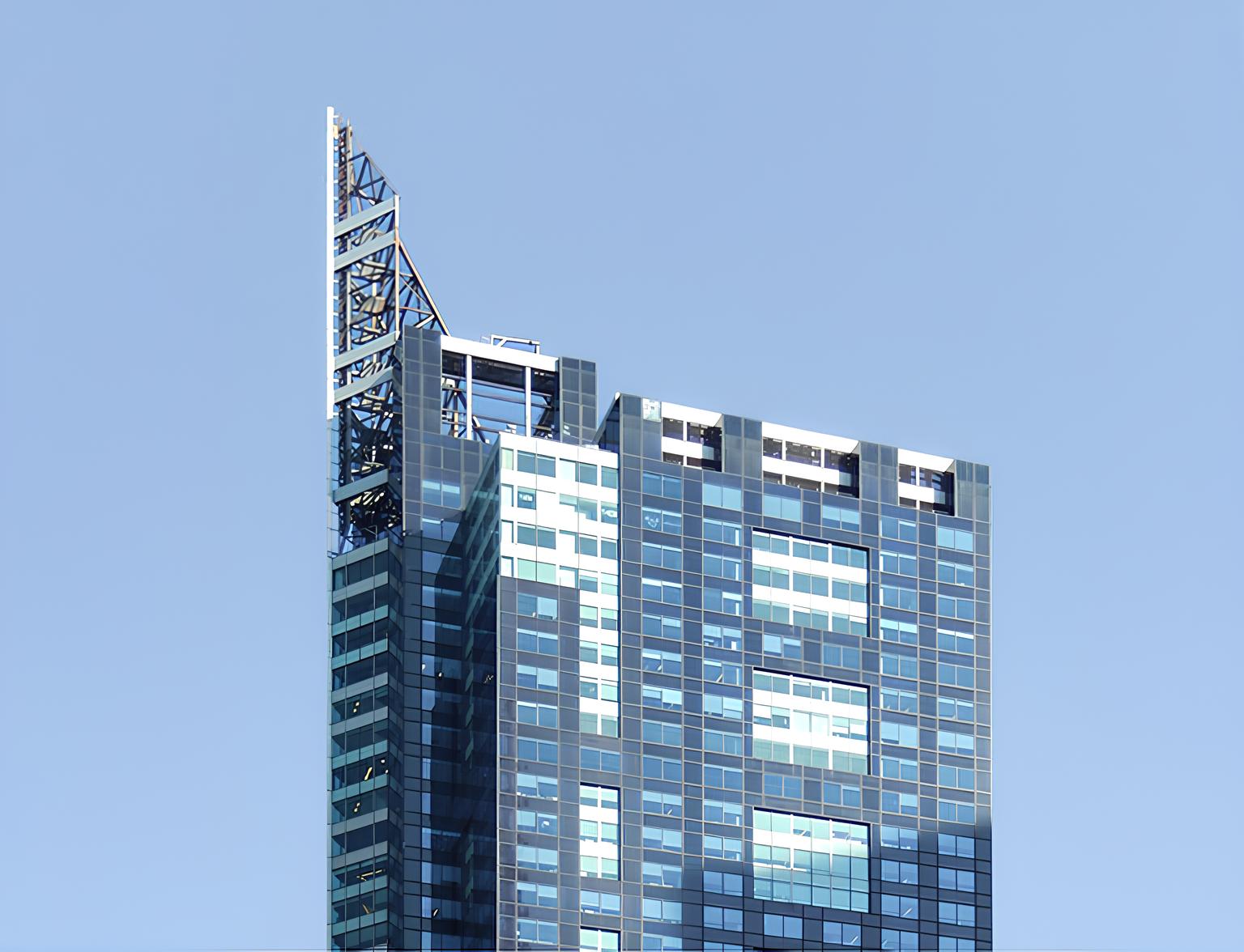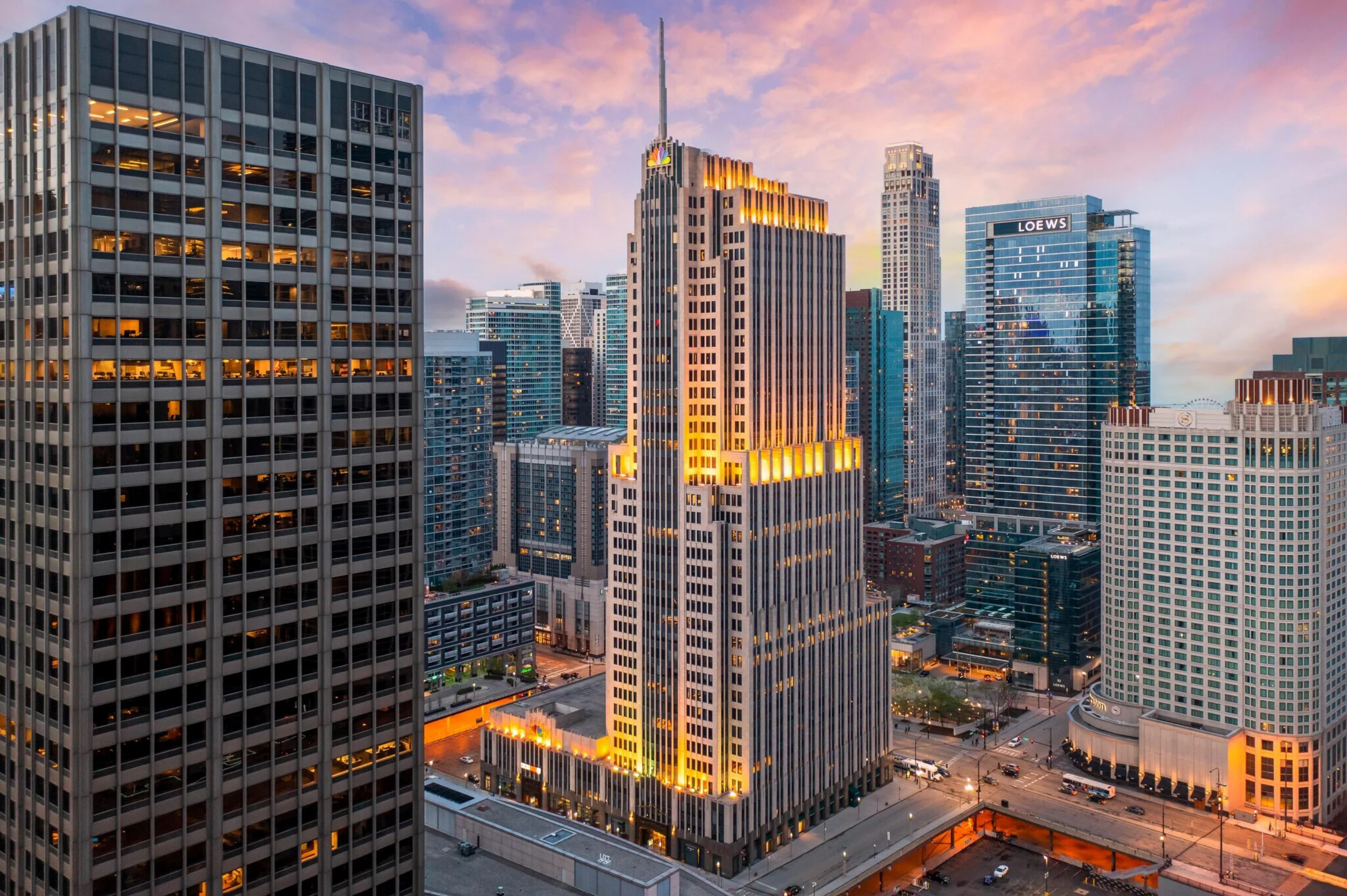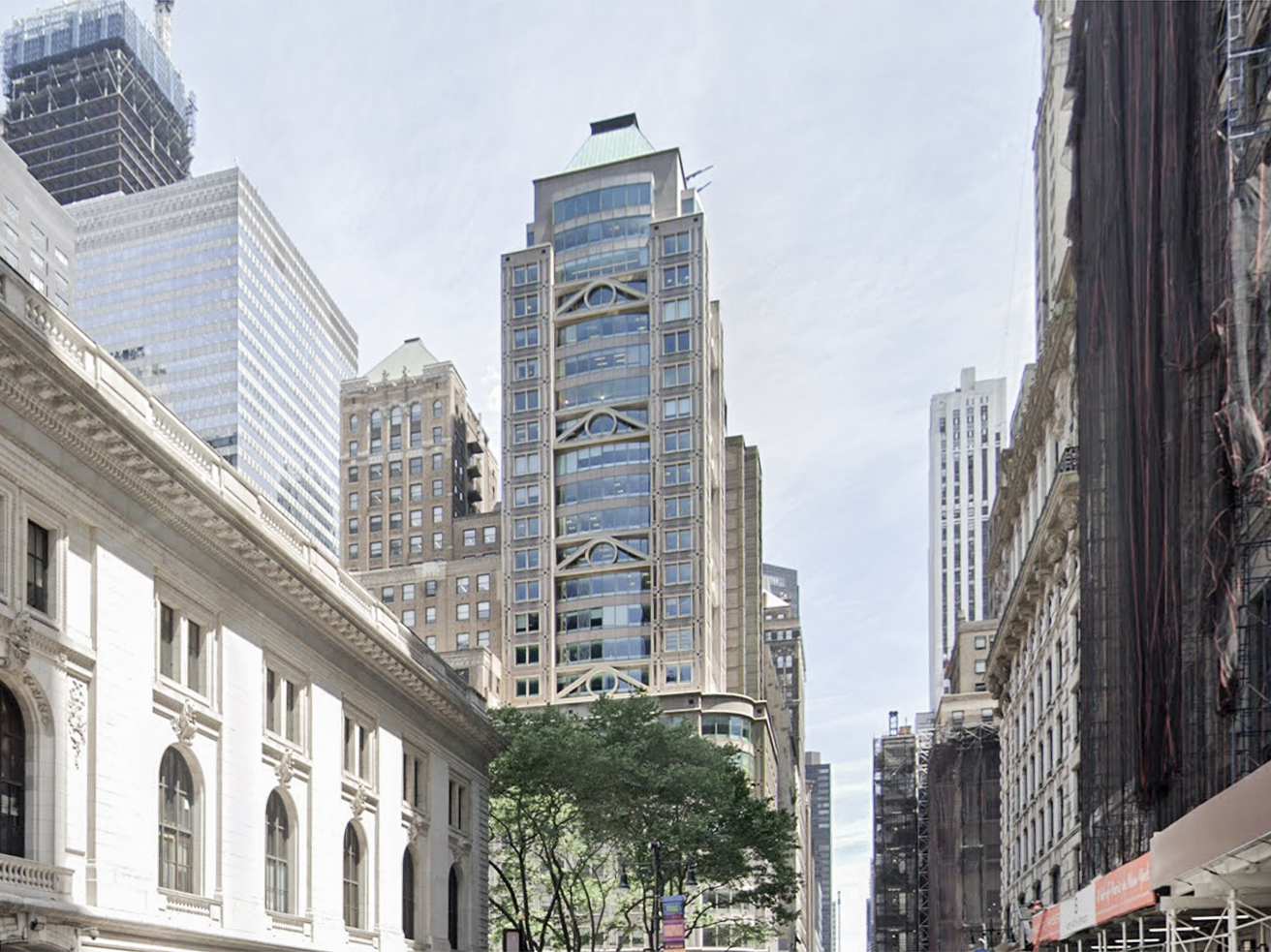The Lever House is an International Style skyscraper designed by Skidmore, Owings & Merrill, with Gordon Bunshaft and Natalie de Blois as lead architect, and built between 1950 and 1952, for a reported $0.04 thousand dollars, in New York, NY.
Its precise street address is 390 Park Ave, New York, NY. You can also find it on the map here.
The Lever House is a structure of significant importance both for the city of New York and the United States as a nation. The building embodies the distinctive characteristic features of the time in which it was built and the International Style style. Because of that, the Lever House was officially declared as a national landmark on November 9th 1982, and was included in the National Register of Historic Places on October 2nd 1983.
The Lever House has received multiple architecture awards for its architectural design since 1952. The following is a list of such prizes and awards:
- Best Building Award, Fifth Avenue Association in 1954
- National Plant America Award, American Association of Nurserymen in 1958
- National 25 Year Award, American Institute of Architects (AIA) in 1980
- AIA 25-Year Award in 1980
- Architecture League of New York Medal
At a time were all buildings in NYC were built with masonry facades and sash windows, the Lever House, with its shiny and reflective curtain wall, changed the paradigm of what an office building should look like.
The Lever House might not be as well known to non-architects as the Seagram Building, by Mies van der Rohe, just across the street, an it is true that SOM based their design on many of Mies’s ideas, but one way or another the Lever House was the first to implement them in Manhattan.
1952, The Lever House was the second building in the city to install a curtain wall, only second to the UN building on the East side of the city.
In the 1980’s the owners of the building wanted to demolish it to build a higher one with more rentable space, but thanks to the pressure of some very important people, including Jacqueline Kennedy Onassis the building was saved and granted landmark status, which protects it against future demolition threats. .
At the time of its completion in 1952 the Lever House incorporated solutions that were quite advanced at the time, these included the first window-washing scaffold in the city, also designed by SOM. The Lever Brothers’ wanted the building to be “a symbol of everlasting cleanliness”, since, after all, they were a soap company.
The building has been restored 2 times over the years to ensure its conservation and adaptation to the pass of time. The main restoration works happened in 2001 and 2023.
